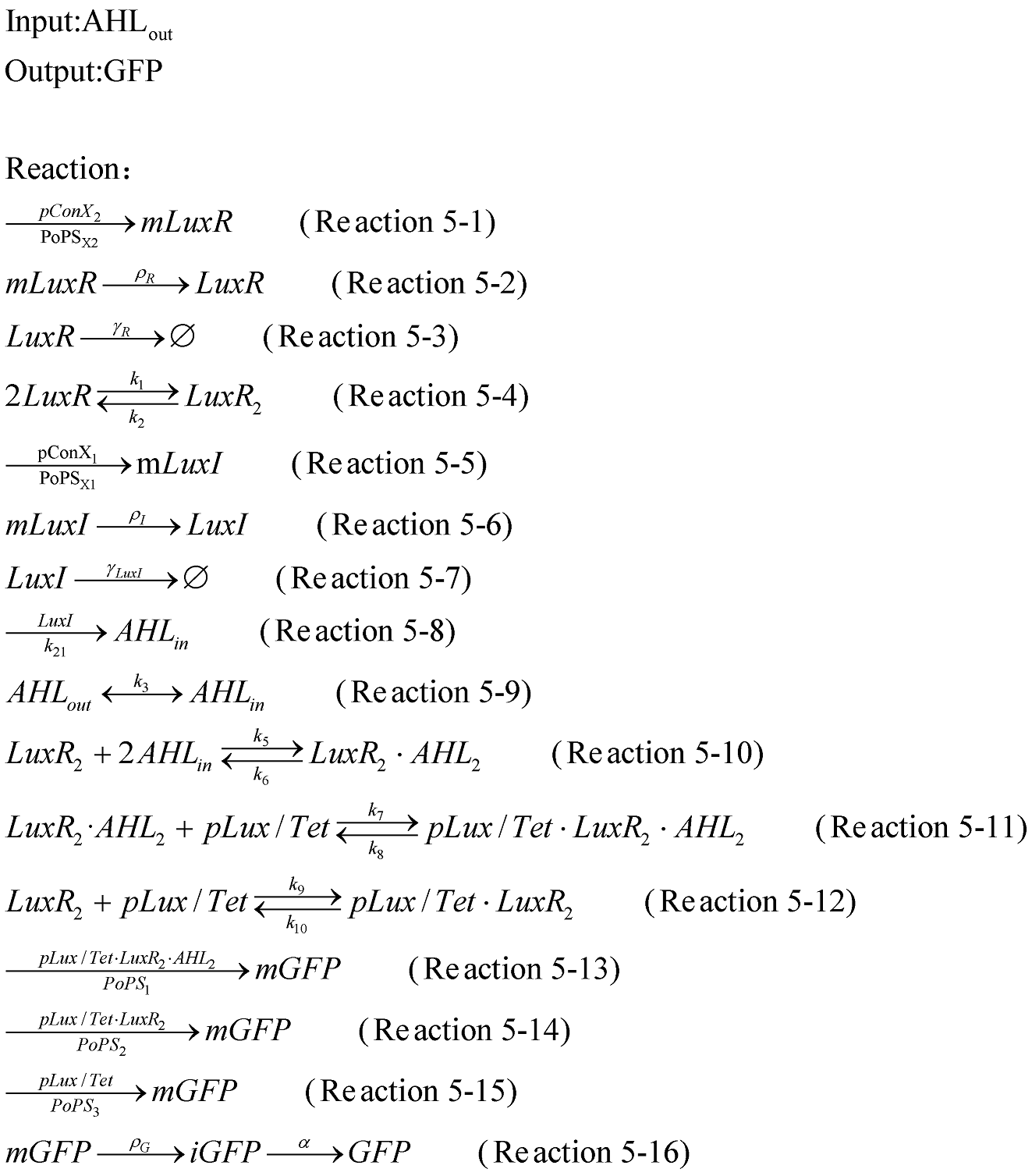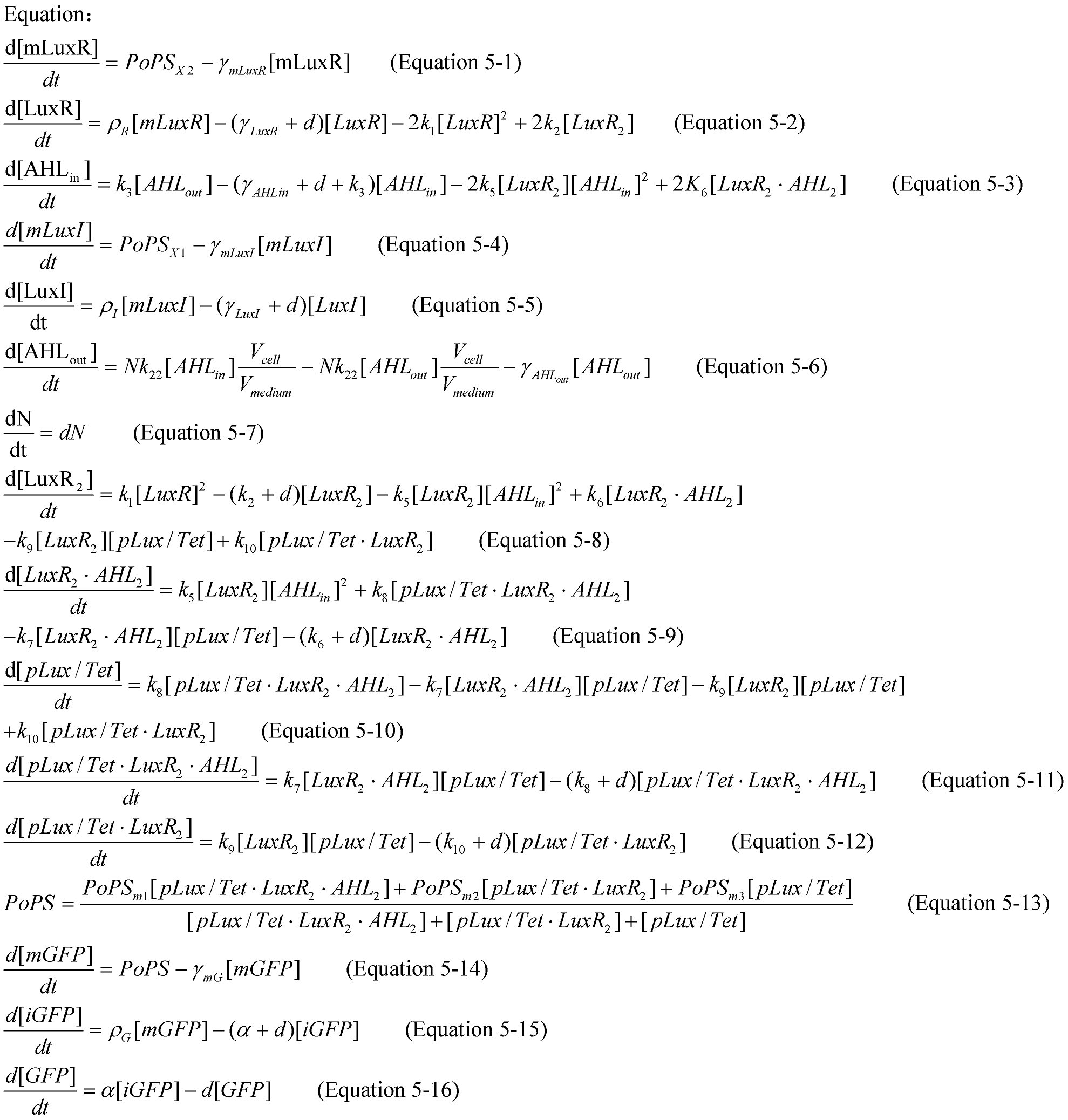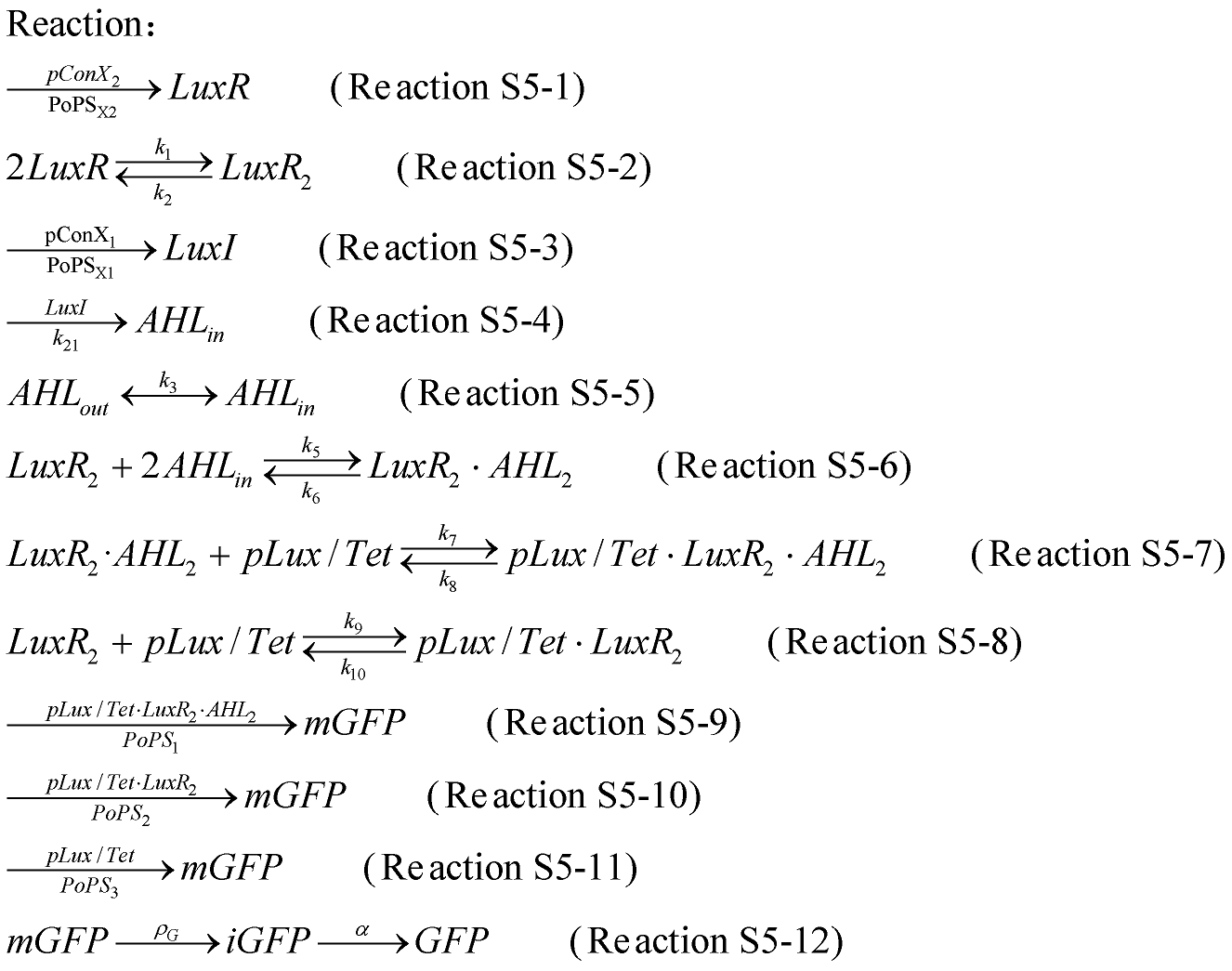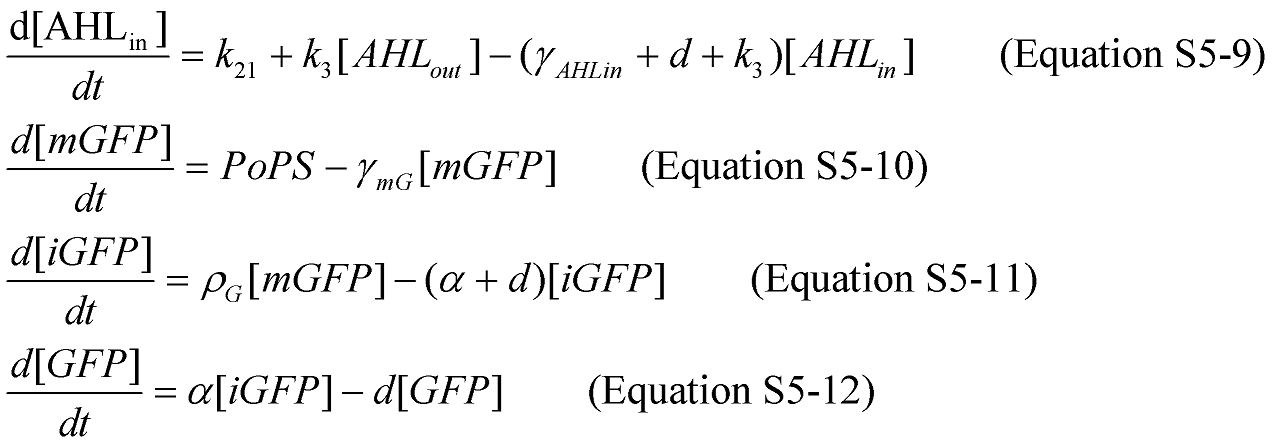Team:USTC/Modeling/Model-5
From 2009.igem.org
| (12 intermediate revisions not shown) | |||
| Line 1: | Line 1: | ||
| + | {{:Team:USTC/Template/Header}} | ||
| + | |||
== '''pConX<sub>1</sub>+LuxI+pConX<sub>2</sub>+LuxR+pLux/Tet+GFP''' == | == '''pConX<sub>1</sub>+LuxI+pConX<sub>2</sub>+LuxR+pLux/Tet+GFP''' == | ||
| - | '''Parts:''' K176217 K176218 K176219 K176220 K176221 | + | '''Parts:''' |
| + | <partinfo>K176217</partinfo> <partinfo>K176217 DeepComponents</partinfo> | ||
| + | <partinfo>K176218</partinfo> <partinfo>K176219</partinfo> <partinfo>K176220</partinfo> <partinfo>K176221</partinfo> | ||
[[Image:model-5-1.jpg|500px]] | [[Image:model-5-1.jpg|500px]] | ||
[[Image:model-5-2.jpg|800px]] | [[Image:model-5-2.jpg|800px]] | ||
| + | |||
| + | |||
| + | == '''Simplified Model-5''' == | ||
| + | To get the datails of the model-processing, click [[Team:USTC/Modeling/Model-2|'''Simplified Model-2''']] | ||
| + | |||
| + | We employed an ODE model. We defined the input to be AHL<sub>out</sub> the and the output to be the synthesis rate of mature GFP. In this system,we assumed the concentration of the LuxR was constant. | ||
| + | |||
| + | [[Image:sm-5-1.jpg|500px]] | ||
| + | |||
| + | |||
| + | To simplify the model, the (Recation S2-4), (Recation S2-5) and (Recation S2-6) were considered to be able to get balance in a very short time. | ||
| + | |||
| + | |||
| + | [[Image:sm2-1-1-3.jpg|900px]] | ||
| + | |||
| + | |||
| + | From above equations, we can the change of PoPS respond to the AHL<sub>in</sub>. | ||
| + | |||
| + | |||
| + | [[Image:sm2-2.jpg|600px]] | ||
| + | |||
| + | |||
| + | For this system, the value of parameter d, 0.004576, could be estimated based on the measurement of the OD. | ||
| + | |||
| + | The values of C<sub>1</sub>, C<sub>2</sub>, C<sub>3</sub>, C<sub>4</sub>, k<sub>3</sub>, and rAHL were same to be those of model-2, click [[Team:USTC/Modeling/Model-2|'''here''']] to the '''Simplified Model-2'''. | ||
| + | |||
| + | The values of 4.8E-3 per sec for rmG, 1.8E-3 per sec for a and 0.4 per sec for pG were got from the experiment conducted by Barry Canton and Anna Labno in 2004, click [http://partsregistry.org/Part:BBa_F2620:Experience/Endy/Data_analysis here] to the details. | ||
| + | |||
| + | [[Image:SM5-3.jpg|450px]] | ||
| + | |||
| + | Conbining the data from our measurements and the parameters estimated in [[Team:USTC/Modeling/Model-2|'''Simplified Model-2''']], we could be able to get the parameter k<sub>21</sub>. | ||
Latest revision as of 03:45, 22 October 2009
| Home | Team | Project | Modeling | Parts | Standard & Protocol | Software Tool | Human Practice | Notebook |
|---|
Team:USTC/Modeling/Model-5
Contents |
pConX1+LuxI+pConX2+LuxR+pLux/Tet+GFP
Parts:
Simplified Model-5
To get the datails of the model-processing, click Simplified Model-2
We employed an ODE model. We defined the input to be AHLout the and the output to be the synthesis rate of mature GFP. In this system,we assumed the concentration of the LuxR was constant.
To simplify the model, the (Recation S2-4), (Recation S2-5) and (Recation S2-6) were considered to be able to get balance in a very short time.
From above equations, we can the change of PoPS respond to the AHLin.
For this system, the value of parameter d, 0.004576, could be estimated based on the measurement of the OD.
The values of C1, C2, C3, C4, k3, and rAHL were same to be those of model-2, click here to the Simplified Model-2.
The values of 4.8E-3 per sec for rmG, 1.8E-3 per sec for a and 0.4 per sec for pG were got from the experiment conducted by Barry Canton and Anna Labno in 2004, click here to the details.
Conbining the data from our measurements and the parameters estimated in Simplified Model-2, we could be able to get the parameter k21.
 "
"






